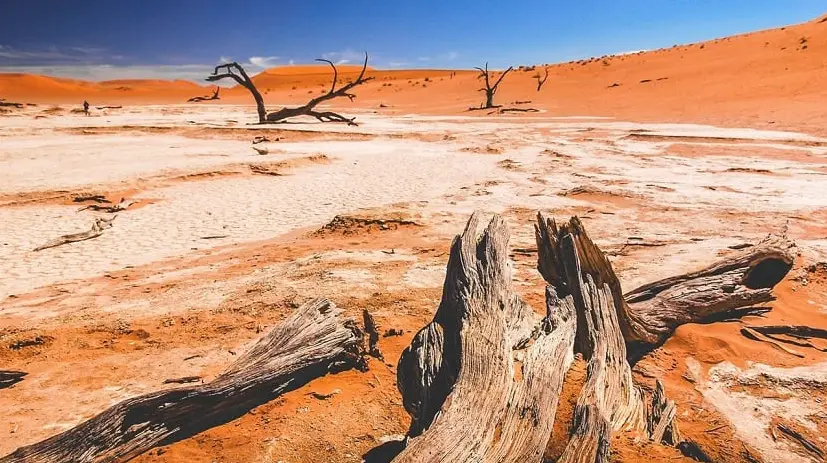Millions of years ago, a meteor wiped out 75% of the planet’s species, including the dinosaurs. Today, we are in the midst of another mass extinction, but this time, the meteor is us: humans.
A mass extinction occurs when a large number of species from various kingdoms disappear in multiple regions over a short geological time span. Currently, the extinction rate is a thousand times higher than it would be without human intervention.
When we think of endangered species, we quickly visualize polar bears, jaguars, or whales. But do we ever think of plants? Probably not, and there’s a term for this: “plant blindness.” This inability to see and emotionally connect with plants —they aren’t furry, and they don’t look at us with cute eyes— makes us ignore the fact that nearly twice as many plant species have already disappeared compared to mammals or birds. It’s time to change the narrative and recognize the “polar bears” of the plant kingdom before it’s too late.
The essential, unnoticed services of plants
Why should we care? Simple: imagine a world without chocolate or coffee. Imagine a party without tequila or rum. Think of a landscape without plants. Or without music! Yes, the material used to make guitars, maracas, and drums comes from plants. Imagine going without food, or even more seriously, without oxygen. All of that would be a world without plants. And many of them, like cacao, are already at risk due to climate change and deforestation.
This extinction storm not only threatens to eliminate foods and products we cherish, such as chocolate and coffee, but it will also lead to the homogenization of global flora. This will result in the loss of ecosystems and essential services that plants provide.
Plants, often without us noticing, provide us with a vast array of services. Mangrove forests, for example, protect us from hurricanes and storms. Forest trees absorb water from the soil and release it as vapor, creating what are known as “flying rivers” that transport the water needed for rain to reach our crops, lakes, and reservoirs. Moreover, flowers support communities of pollinators, without which we couldn’t produce the fruits and vegetables we consume. Plant roots hold the soil in place, reducing erosion, and their leaves provide shade and absorb carbon from the atmosphere, helping regulate the climate.
We truly only know the tip of the iceberg because we only have a good understanding of the species we use, and they represent just one-eighth of the approximately 400,000 plant species that have been discovered. Not to mention the species we have yet to discover, living silently in forests and possibly disappearing before we even know about them. Some scientists estimate there could be around 100,000 species waiting to be found. Some of them may have the potential to cure cancer, or even hold the key to surviving on other planets, but we risk losing them without even knowing.
The IUCN Red List: A biodiversity barometer
Determining how many species have gone extinct or how many are at risk is a monumental challenge. Many species have only been collected a couple of times; they are stored in herbariums, which is how we know they exist. But we know very little about their status in the wild, their vulnerability to climate change, or the condition of other species they depend on. At this very moment, an excavator could be destroying the last individuals of a unique plant species. It’s a race against time.
This is where the Red List of Threatened Species of the International Union for Conservation of Nature (IUCN) comes in, functioning as a barometer of biodiversity. Just as a barometer measures changes in atmospheric pressure to predict storms, this list measures the status of the planet’s species, alerting us when the pressure of extinction is rising. However, so far, only about 71,000 plant species of the nearly 400,000 on Earth have been assessed. That means only 18% have been evaluated! Of that tiny group of evaluated plants, around 27,000 — or 38% — are under some threat category. In other words, the barometer indicates that we are already in the midst of a storm.
The functioning of ecosystems depends on the interaction of many species. Losing some can trigger chain extinctions if other plants or animals depend on them. Trying to save just one species, or a few, is like trying to save a patient by only caring for the heart and kidneys but letting the liver and lungs die. In the long term, that strategy won’t work.
Cocobolo: A species on the brink of disappearance due to overexploitation and illegal trafficking
In Latin America, only a small fraction of the flora has been assessed. In countries like Argentina and Chile, less than 10%; in most countries, less than 25%. Even so, several nations have over 1,000 threatened species. It is imperative to accelerate studies to find out which other species are at risk.
One example in the region is cocobolo (Dalbergia retusa), whose reddish and veined wood has been used to make fine furniture, crafts, and even musical instruments. Due to high demand for its valuable wood —one tree can cost up to $10,000— cocobolo has been intensely exploited. Additionally, the expansion of agriculture and livestock farming has significantly reduced its habitat, the dry forest. It is estimated that over 80% of cocobolo populations have been lost. If urgent measures are not taken, this species could disappear.
In an effort to prevent the overexploitation of cocobolo, it has been classified as critically endangered on the IUCN Red List and protected under CITES Appendix II, which regulates its trade. This means a special permit is required to export its wood. However, illegal logging and trade continue to threaten it. For example, in Panama, criminal networks are dedicated to trafficking it. Between 2020 and 2022, around 3,000 cocobolo logs were seized, and in 2023, 300. Just a couple of months ago, four containers of illegal wood were confiscated. Who knows how many more trees are trafficked undetected? It’s clear that cocobolo forests are still being emptied.
Saving the “green polar bears” before it’s too late
In light of the extinction crisis we are facing, it’s clear that we need a combination of strategies to ensure the long-term preservation of our “green polar bears.” In the case of commercially used species, it is crucial to regulate their exploitation and trade. For species we don’t know or use, scientific research is urgent. Botanists must explore little-studied areas to document or discover species we don’t yet know, and contribute to assessing those we do. The state must protect them. Ecologists need to study their needs and relationships with other species to understand how to conserve them.
The preservation of species in botanical gardens and seed banks —our “Noah’s Arks”— is key to restoring them if they disappear. Without education, research, and community and government support, we won’t be able to reverse extinction. It is in our hands to decide whether we continue being the meteor or become guardians of biodiversity.
*A text produced in conjunction with the Inter-American Institute for Global Change Research (IAI). The opinions expressed in this publication are those of the authors and not necessarily those of their organizations.












